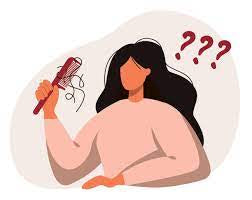While many are introduced to alopecia firsthand and others tend to learn about it from a friend, family member, or even from the experience of celebrities. Alopecia is a medical term for baldness or hair loss. While many tend to refer to hair loss as alopecia there are various types and it is imperative to understand what type of alopecia you have in order to address and look at methods to best treat you specific situation.
Alopecia can be seen at all ages and primarily affects the scalp and can sometimes disrupt hair growth on beards, eyebrows, eyelashes and other parts of the body. It is not only important to understand the type of alopecia you may have to best address it but also how it affects you and can progress over time. Many individuals visit a dermatologist to be formally diagnosed as well as ways to cope with the condition, ranging from online support groups to products and treatments.
- What Are The Early Signs Of Alopecia?
Any changes in the hair could be an early sign of alopecia and should be monitored. Things to be on the lookout for:
- Hair breaking more often, indicating that new growth is weak.
- Excessive shedding (more hair than you used to).
- Hair fall.
- Clumps of hair coming out when you wash your hair.
- Bald spots.
- Changes to your fingernails or toenails—very small indents, little white lines or loss of condition in your nails.
As alopecia progresses, hair loss may become more obvious and more widespread across your scalp (and occasionally across the body):
- Multiple bald patches across the scalp.
- Loss of beard hair, or bald patches in the beard.
- Hair in other areas of the body falling out (e.g. eyelashes, arms, legs).
- Pronounced thinning, or complete hair loss, across the scalp.
- How is Alopecia Diagnosed?
After a physical examination and an overview of medical history, alopecia can be diagnosed. Some physicians may also perform a hair analysis and blood test to assess if any vitamin deficiencies are present.
- How is Alopecia Different From Other Forms of Hair Loss?
Alopecia is different to the most common type of hair loss, male/female-pattern baldness—a condition termed “androgenetic alopecia.” In men, androgenic alopecia takes the form of a receding hairline followed by the thinning of the hair on the crown and temples4. Alopecia Areata differs in that it causes patches of baldness rather than a single consistent receding line. These patches are usually about the size of a large coin, appear on the scalp in various frequencies and can affect anyone of any age—whereas pattern baldness is most common among older men. In some cases of alopecia areata, the hair will regrow naturally over time.
- What are Treatment Options?
A number of treatments are available—medical and product-centered—for alopecia. Appropriate treatment will vary depending on the type of alopecia you are experiencing (alongside other factors like genetics or age). The first step is to seek advice from a doctor or trichologist, who will diagnose the type of alopecia and follow with a personalized consultation so we can develop a regimen that best suits you https://www.blackhairandskincare.com/collections/shop-all/products/15-minute-personal-phone-consultation.
Using organic products with quality ingredients would facilitate the healthiest environment for your hair and scalp https://www.blackhairandskincare.com.
Addressing any inflammation inside the body by addressing your diet and water intake. When looking at you diet, an anti-inflammatory diet is the key! https://www.blackhairandskincare.com/collections/shop-all/products/anti-inflammatory-diet-for-beginners-ccca-alopecia-diet
https://youtu.be/odudBqsLC6Q


0 comments